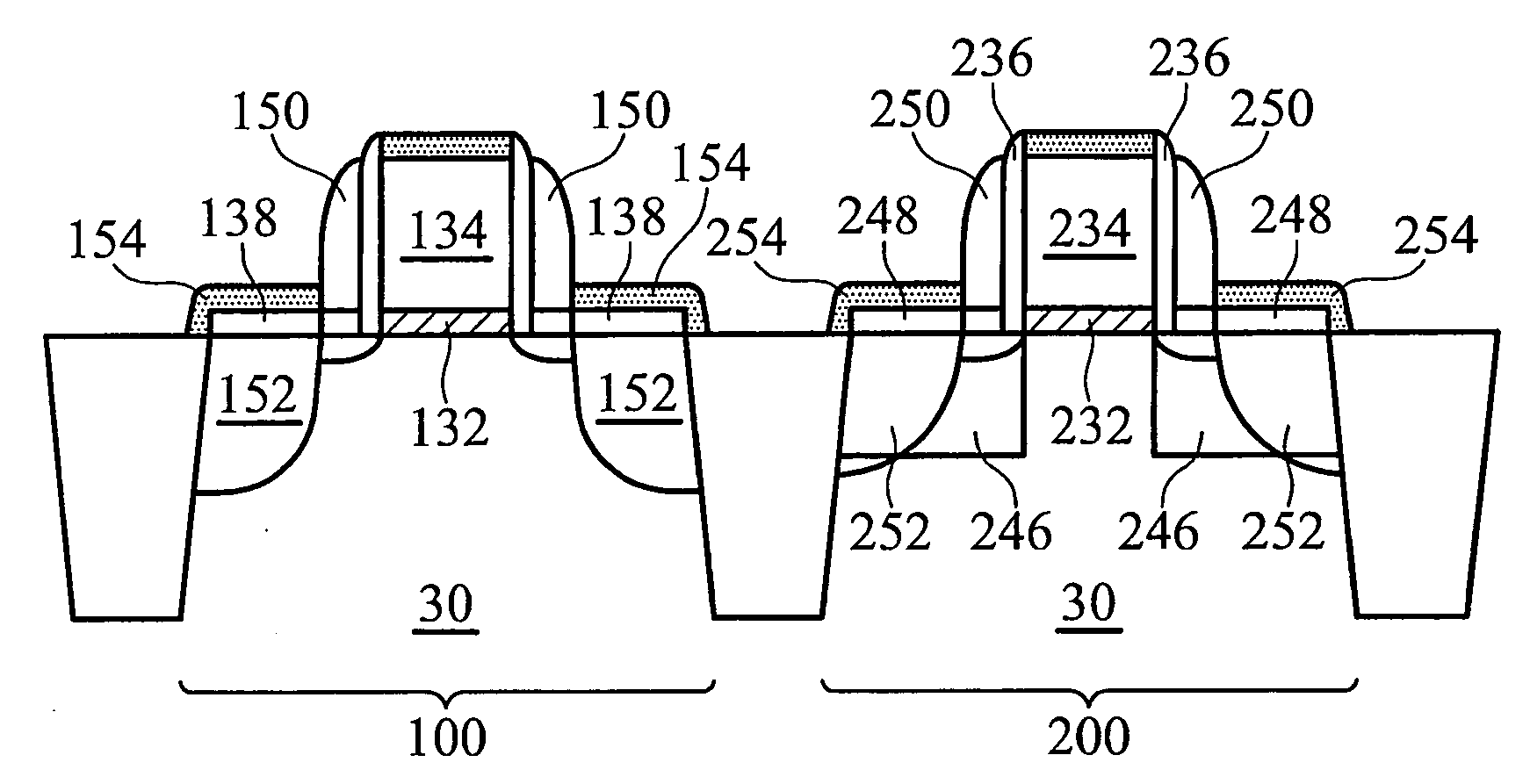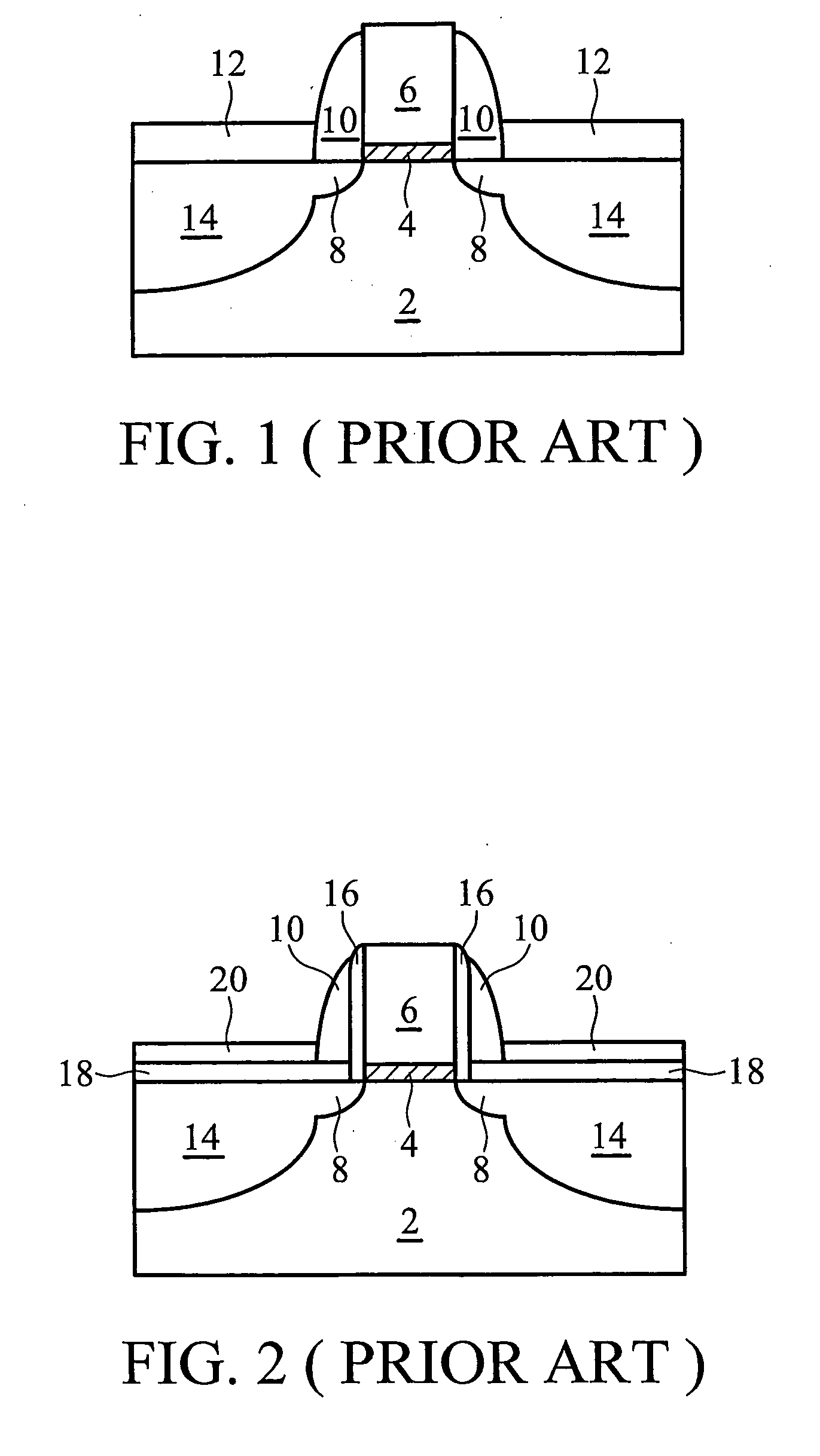CMOS device with raised source and drain regions
a technology of metal oxidesemiconductor and source, applied in the direction of semiconductor devices, electrical apparatus, transistors, etc., can solve the problems of difficult control of implantation depth for forming shallow junctions in source and drain extension regions of small-scale devices, process incurs several problems, and the effect of reducing the implantation depth
- Summary
- Abstract
- Description
- Claims
- Application Information
AI Technical Summary
Benefits of technology
Problems solved by technology
Method used
Image
Examples
Embodiment Construction
[0015]The making and using of the presently preferred embodiments are discussed in detail below. It should be appreciated, however, that the present invention provides many applicable inventive concepts that can be embodied in a wide variety of specific contexts. The specific embodiments discussed are merely illustrative of specific ways to make and use the invention, and do not limit the scope of the invention.
[0016]Research results have revealed that solubilities of impurities in source and drain regions of metal-oxide-semiconductor (MOS) devices are related to the strain in the source and drain regions. Typically, p-type impurities, such as boron, have improved solubility under compressive strains. N-type impurities, such as arsenic, have improved solubility under tensile strains. However, further research results have revealed that the improvement in solubility of arsenic under tensile strain is significantly less than the improvement in solubility of boron under compressive str...
PUM
 Login to View More
Login to View More Abstract
Description
Claims
Application Information
 Login to View More
Login to View More - R&D
- Intellectual Property
- Life Sciences
- Materials
- Tech Scout
- Unparalleled Data Quality
- Higher Quality Content
- 60% Fewer Hallucinations
Browse by: Latest US Patents, China's latest patents, Technical Efficacy Thesaurus, Application Domain, Technology Topic, Popular Technical Reports.
© 2025 PatSnap. All rights reserved.Legal|Privacy policy|Modern Slavery Act Transparency Statement|Sitemap|About US| Contact US: help@patsnap.com



